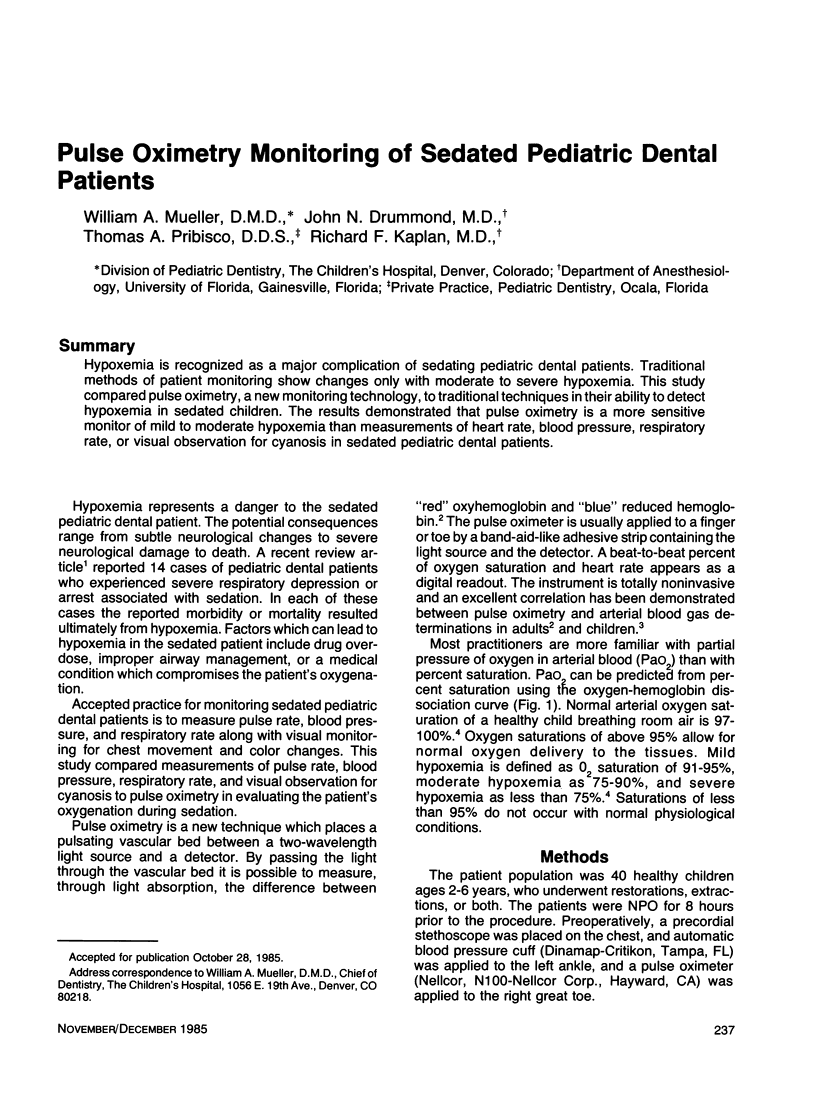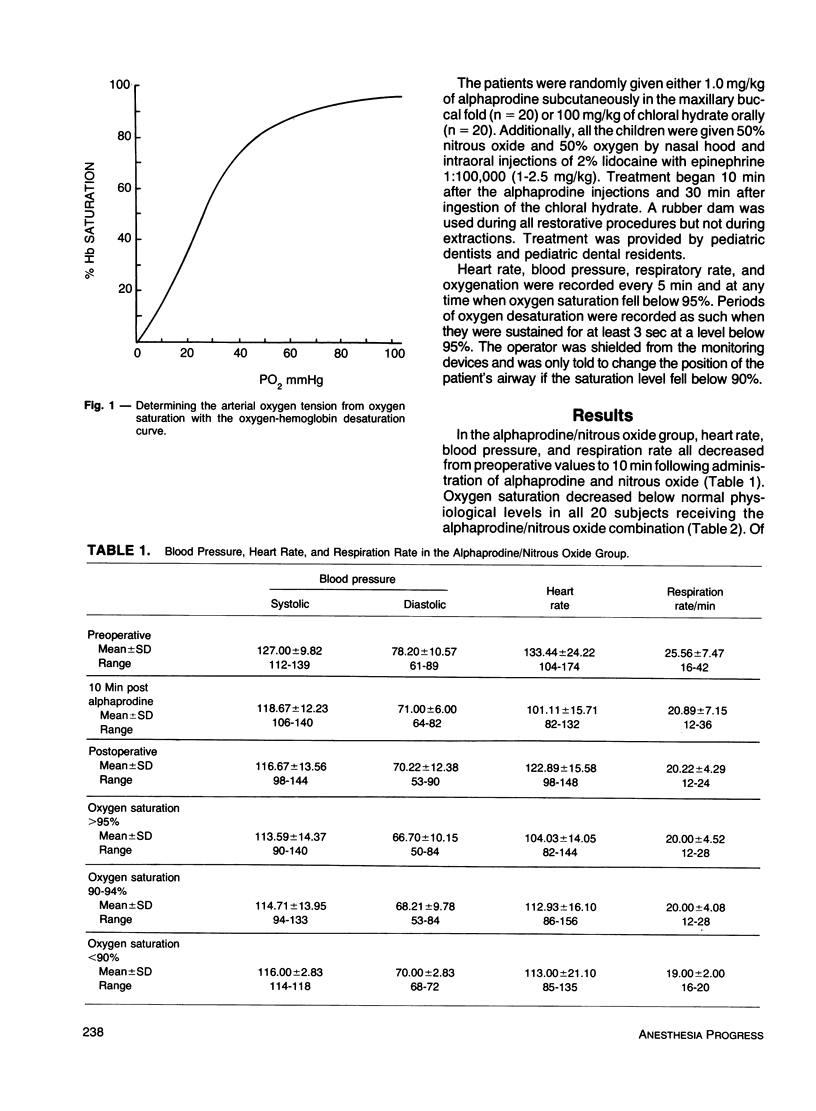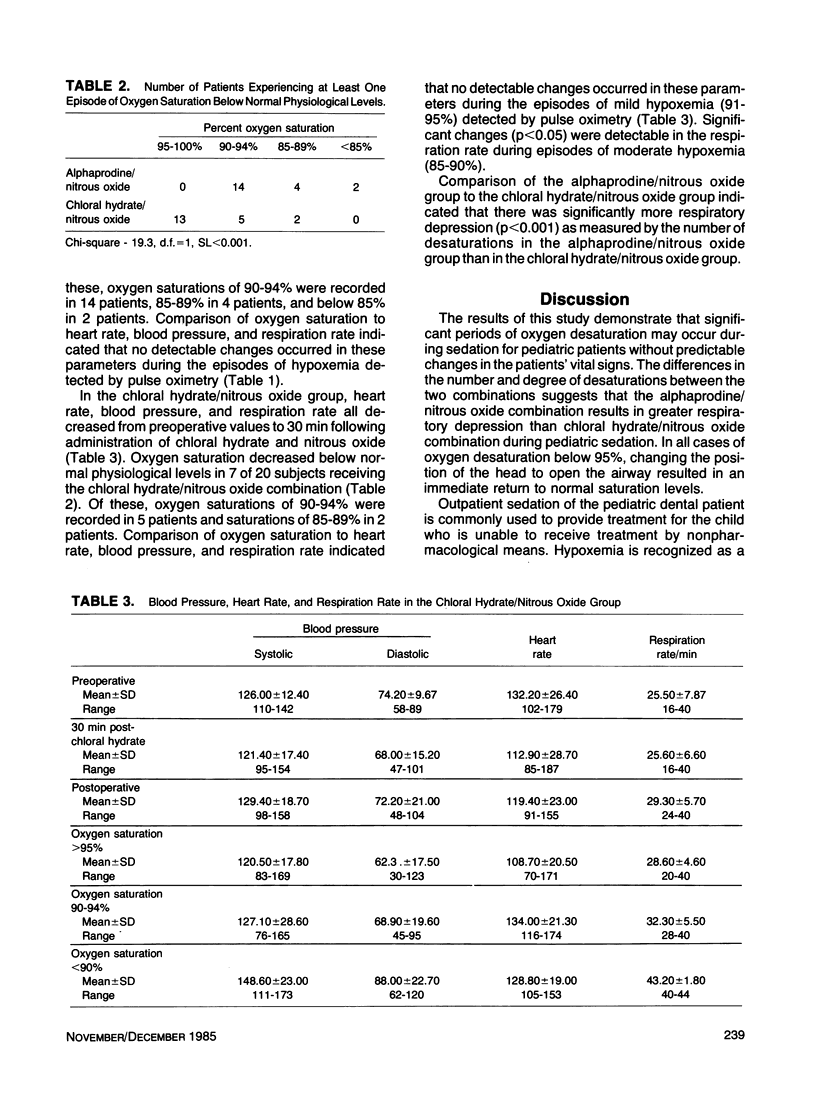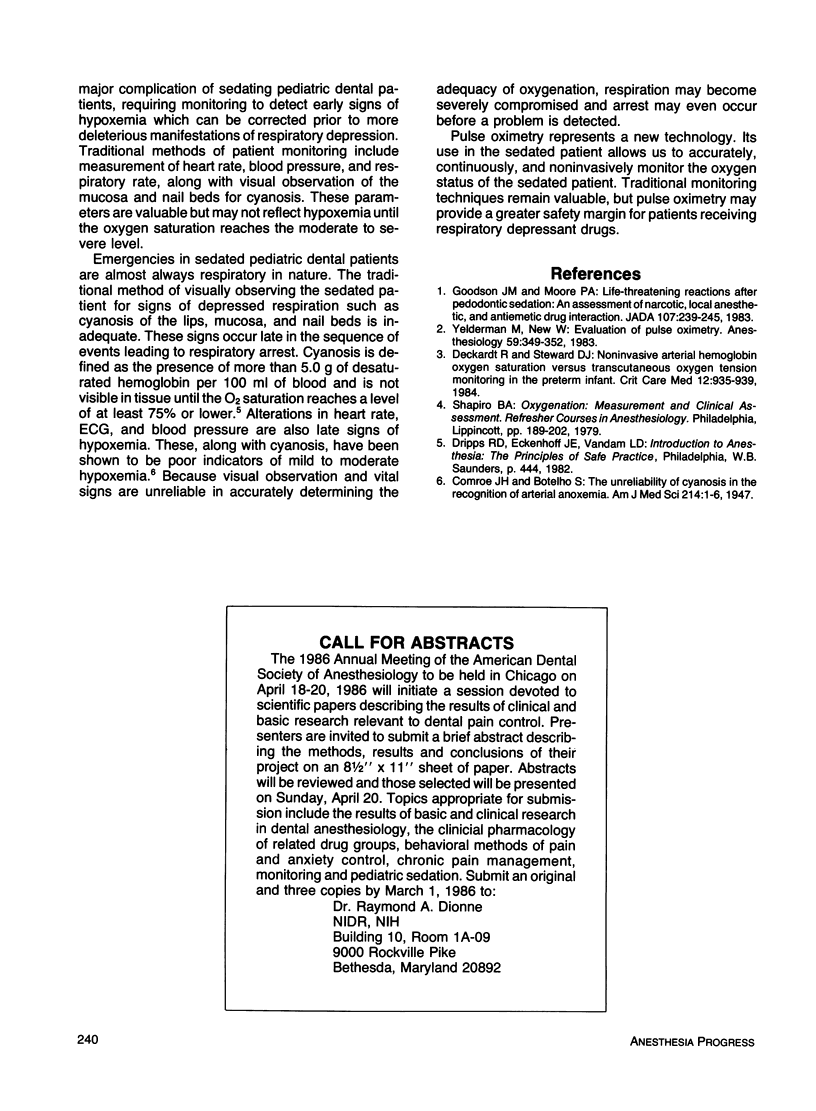Abstract
Hypoxemia is recognized as a major complication of sedating pediatric dental patients. Traditional methods of patient monitoring show changes only with moderate to severe hypoxemia. This study compared pulse oximetry, a new monitoring technology, to traditional techniques in their ability to detect hypoxemia in sedated children. The results demonstrated that pulse oximetry is a more sensitive monitor of mild to moderate hypoxemia than measurements of heart rate, blood pressure, respiratory rate, or visual observation for cyanosis in sedated pediatric dental patients.
Full text
PDF



Selected References
These references are in PubMed. This may not be the complete list of references from this article.
- Deckardt R., Steward D. J. Noninvasive arterial hemoglobin oxygen saturation versus transcutaneous oxygen tension monitoring in the preterm infant. Crit Care Med. 1984 Nov;12(11):935–939. doi: 10.1097/00003246-198411000-00002. [DOI] [PubMed] [Google Scholar]
- Goodson J. M., Moore P. A. Life-threatening reactions after pedodontic sedation: an assessment of narcotic, local anesthetic, and antiemetic drug interaction. J Am Dent Assoc. 1983 Aug;107(2):239–245. doi: 10.14219/jada.archive.1983.0225. [DOI] [PubMed] [Google Scholar]
- Yelderman M., New W., Jr Evaluation of pulse oximetry. Anesthesiology. 1983 Oct;59(4):349–352. doi: 10.1097/00000542-198310000-00015. [DOI] [PubMed] [Google Scholar]


